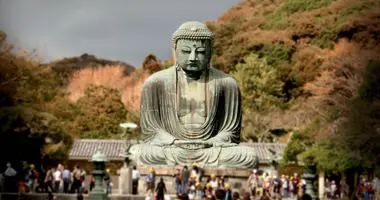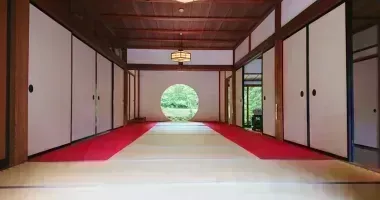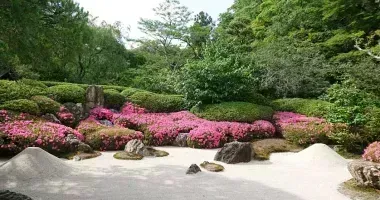Tsurugaoka Hachimangu Shrine
- Published on : 26/03/2024
- by : Japan Experience
- Youtube
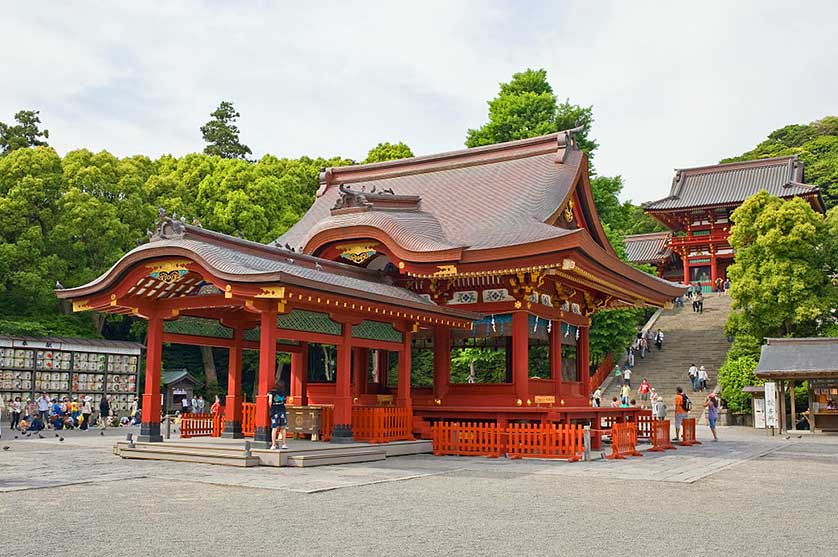
Kaguraden, Tsurugaoka Hachimangu, Kamakura, Kanagawa Prefecture
Tsurugaoka Hachimangu Shrine stands as Kamakura's most important Shinto shrine, with a rich history dating back to 1063. This iconic shrine is dedicated to Hachiman, the patron god of samurai, and plays a central role in Kamakura's cultural and spiritual life. Visitors can explore its expansive grounds, admire its architectural beauty, and experience various traditional events throughout the year. Located at the heart of Kamakura, Tsurugaoka Hachimangu is not just a religious site but also a symbol of the city's historical significance and a testament to the enduring legacy of samurai culture in Japan.
Historical significance and founding
Tsurugaoka Hachimangu's history is deeply intertwined with the rise of samurai power in Japan. The shrine was originally founded in 1063 by Minamoto Yoriyoshi, an ancestor of the Minamoto clan. However, its current location and grandeur are attributed to Minamoto Yoritomo, the founder of the Kamakura shogunate, who moved and expanded the shrine in 1180.
Yoritomo's decision to enlarge the shrine was not merely religious but also political, symbolizing the Minamoto clan's ascendancy and the establishment of Kamakura as the seat of warrior government. The shrine's dedication to Hachiman, the patron deity of the Minamoto family and samurai in general, further cemented its importance in the newly established samurai regime.
Throughout its history, Tsurugaoka Hachimangu has been central to many significant events. One of the most infamous incidents occurred in 1219 when Minamoto no Sanetomo, the third shogun of the Kamakura shogunate, was assassinated on the shrine's steps by his nephew, marking the end of the direct Minamoto lineage in power.
Layout and key features of the shrine complex
The layout of Tsurugaoka Hachimangu is a masterpiece of religious architecture and urban planning. The shrine complex is approached via a 1.8 km long, straight approach called Wakamiya Ōji, which serves as Kamakura's main street. This approach is lined with torii gates and passes through the entire city center, creating a grand procession to the shrine.
Key features of the shrine complex include:
- The Maiden (Lower Worship Hall): Located at the base of the stairs, this open pavilion is used for dance and music performances.
- The main shrine buildings: Situated atop a wide staircase, these include the Hongu (main sanctuary) and various auxiliary structures.
- The Wakamiya Shrine: A secondary shrine located to the right of the main stairway.
- The Genpei Ponds: Two ponds flanking the main approach, symbolizing the Minamoto (Genji) and Taira (Heike) clans.
- The peony garden: A beautiful garden surrounding the Minamoto Pond, open seasonally.
The shrine's design incorporates elements of feng shui, with its location carefully chosen for its auspicious qualities. The layout, with its straight approach and elevated main buildings, was intended to create an impressive visual effect and reinforce the shrine's importance.
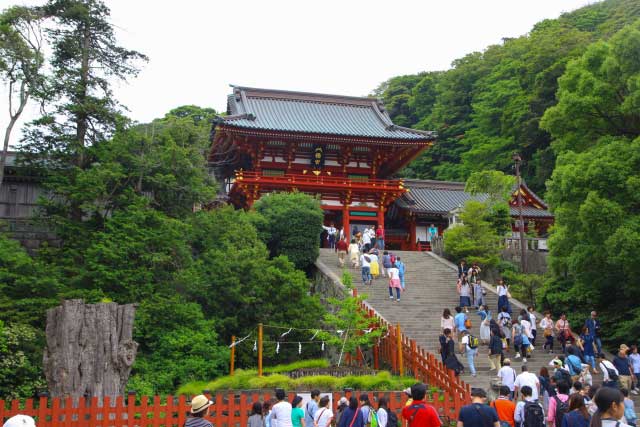
Tsurugaoka Hachimangu, Kamakura
Cultural and religious importance
Tsurugaoka Hachimangu holds immense cultural and religious significance in Japan. As a Shinto shrine dedicated to Hachiman, it embodies the syncretic nature of Japanese religion. For much of its history, until the Meiji Restoration of 1868, the shrine was as much a Tendai Buddhist temple as it was a Shinto shrine, reflecting the blending of these two religions in pre-modern Japan.
The shrine's importance extends beyond its religious function. It serves as a repository of Kamakura's history and culture, housing a museum that displays various treasures including swords, masks, and historical documents. These artifacts provide valuable insights into Japan's samurai heritage and the Kamakura period's cultural achievements.
Moreover, Tsurugaoka Hachimangu plays a crucial role in preserving and promoting traditional arts and customs. The shrine grounds are used for various cultural activities, including:
- Yabusame: The traditional art of horseback archery, performed twice a year at the shrine.
- Kyudo: Japanese archery, regularly practiced within the shrine precincts.
- Traditional dance and music performances: Often held at the Maiden.
These activities not only attract tourists but also help maintain continuity with Japan's cultural past.
Notable events and festivals
Tsurugaoka Hachimangu is the venue for numerous events and festivals throughout the year, drawing millions of visitors. Some of the most significant include:
- Hatsumode: The first shrine visit of the New Year, attracting over two million visitors, making it one of Japan's most popular shrines for this tradition.
- Yabusame: Held in mid-April and mid-September, this horseback archery ritual is a spectacular display of traditional martial arts.
- Kamakura Festival: A week-long event in April featuring various traditional performances, including the "Shizuka no Mai" dance.
- Reitaisai: The main shrine festival held on September 14-16, featuring rituals, processions, and yabusame demonstrations.
These events not only celebrate the shrine's religious significance but also showcase Kamakura's rich cultural heritage and provide a link to its samurai past.
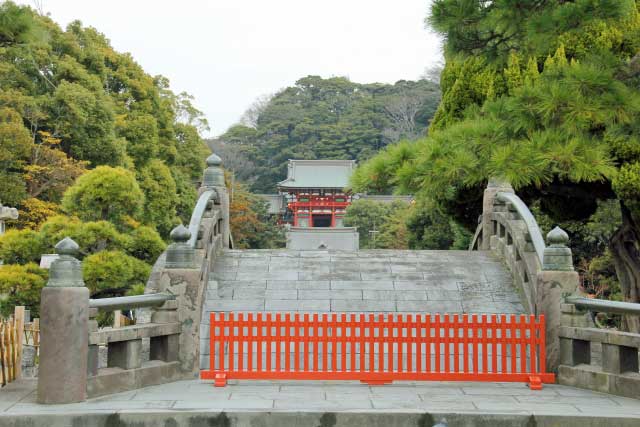
Tsurugaoka Hachimangu, Kamakura
Accessing and exploring the shrine
Tsurugaoka Hachimangu is easily accessible and offers visitors a rich, immersive experience in Japanese history and culture. To reach the shrine:
- From Tokyo, take the JR Yokosuka Line to Kamakura Station (about 1 hour).
- From Kamakura Station, it's a 10-15 minute walk to the shrine.
Visitors can choose two routes from the station:
- Through the busy Komachi-dori shopping street.
- Along the Dankazura, a raised pedestrian path lined with cherry trees.
When exploring the shrine, visitors should:
- Take time to appreciate the approach, noting the torii gates and the symbolic ponds.
- Visit the museum to view historical artifacts.
- Climb the main staircase to the upper shrine for panoramic views of Kamakura.
- Explore the sub-shrines and gardens within the complex.
- Consider timing visits to coincide with major festivals for a more dynamic experience.
The shrine grounds are open year-round, with longer hours during summer months. While admission to the main grounds is free, there may be fees for special exhibitions or events.
Surrounding attractions and facilities
Tsurugaoka Hachimangu is situated in the heart of Kamakura, making it an ideal starting point for exploring the city's other attractions. Nearby points of interest include:
- The Kamakura Museum of National Treasures: Located within the shrine grounds, it houses important cultural artifacts.
- The Museum of Modern Art, Kamakura: Situated near the shrine, it offers a contrast between traditional and contemporary Japanese culture.
- Komachi-dori: A bustling shopping street with numerous restaurants and souvenir shops.
- Other historical temples and shrines in Kamakura, such as Kotoku-in (home of the Great Buddha) and Hasedera.
The shrine complex itself offers various facilities for visitors, including:
- Several coffee shops for refreshments.
- A peony garden, open seasonally.
- A kindergarten and offices, showcasing the shrine's continued role in community life.
- A dojo where traditional martial arts are practiced.
Preservation efforts and recent changes
Tsurugaoka Hachimangu has undergone various preservation and restoration efforts throughout its history to maintain its cultural and historical significance. Recent notable changes and preservation efforts include:
- The loss of the iconic 1000-year-old ginkgo tree in 2010, which was uprooted by a storm. Efforts have been made to preserve parts of the tree and encourage new growth from its remains.
- Ongoing maintenance and restoration of shrine buildings to preserve their historical integrity while ensuring safety for visitors.
- Adaptation to modern needs, such as improved accessibility and visitor facilities, while maintaining the shrine's traditional character.
- Conservation of cultural artifacts housed in the shrine's museum.
- Efforts to maintain traditional practices like yabusame and other rituals, ensuring their continuation for future generations.
These preservation efforts aim to balance the shrine's historical significance with its role as a living cultural institution. By adapting to contemporary needs while maintaining its traditions, Tsurugaoka Hachimangu continues to be a vital link between Japan's past and present, offering visitors a unique glimpse into the country's rich cultural heritage.
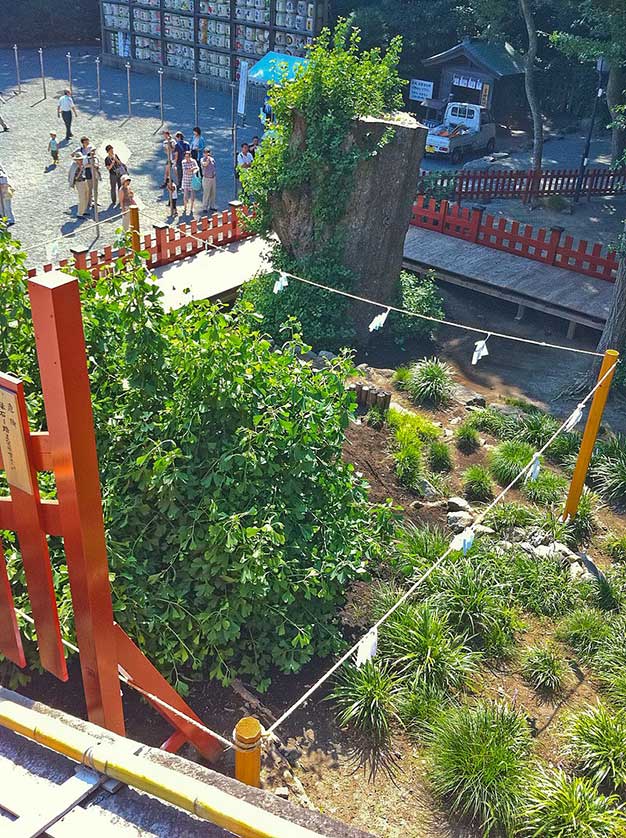
Ginkgo tree stump, Tsurugaoka Hachimangu, Kamakura
